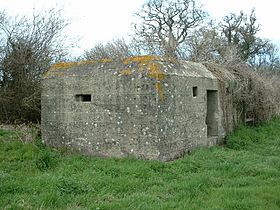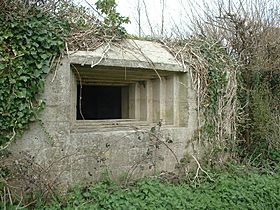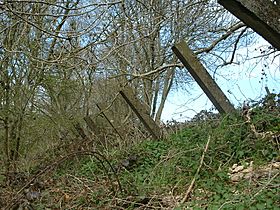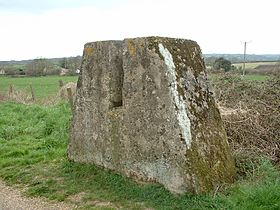Taunton Stop Line facts for kids
The Taunton Stop Line was a special defensive line built in southwest England during World War II. Its main purpose was to stop enemy forces, especially fast-moving tanks, if they managed to break through earlier defenses. It was like a strong barrier designed to slow down any invasion.
Contents
Why Was the Taunton Stop Line Built?
The Taunton Stop Line was one of more than fifty similar defense lines created across England during World War II. These lines were built to divide the country into smaller sections. This way, if enemies broke through, they could be contained until more soldiers arrived to fight them. These "Stop Lines" used natural features like rivers and hills, along with man-made structures, to create a continuous defense. The longest and most important of these was the GHQ Line. These defenses were planned by General Sir Edmund Ironside, who was in charge of Britain's home defenses.
Where Was the Taunton Stop Line?
The Taunton Stop Line stretched for almost 80 kilometers (50 miles) through Somerset, Dorset, and Devon. It ran from Seaton to Axminster and then to Chard, following the River Axe. From there, it followed the Great Western Railway to Ilminster, and then the railway and Chard Canal to Taunton. It continued along the Bridgwater and Taunton Canal to Bridgwater and finally followed the River Parrett to the coast near Highbridge. Highbridge was also where another important defense line, the GHQ Line, began.
What Defenses Were Used?
Besides using natural obstacles like canals, rivers, and railway embankments, the line was heavily defended by early 1942. It had:
- 309 small concrete bunkers called pillboxes, usually for light machine guns like the Bren gun.
- 61 larger machine gun posts for heavier weapons like the Vickers machine gun.
- 21 fixed anti-tank gun positions, using old six-pound guns from World War I.
- Many anti-tank obstacles made of concrete posts, cubes, and pyramids. These were designed to stop enemy tanks.
- Special chambers cut into bridges, ready to be blown up if enemies tried to cross.
- Other weapons included Boys Anti-tank Rifles and mobile QF 2 pounder guns.
To make the line even stronger and block major roads and railways, twelve "Defensive Islands" were added in 1941. These were like mini-fortresses within the line, including places like Bridgwater and Creech St Michael. These islands were planned by General Brooke, who took over from General Ironside.
At first, two army divisions were meant to defend the line. However, from late 1940, the Home Guard (volunteer soldiers who protected Britain at home) increasingly took over this duty. Many of the original pillboxes can still be seen along the line today.
Images for kids
-
One of a pair of blocks that allowed the railway line to be blocked quickly by inserting a barrier such as a section of rail. The rail block was intended to stop enemy tracked vehicles from travelling along the railway route. The mass of concrete stands on a foundation and is about 1.5 meters (5 feet) high.
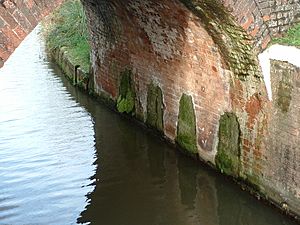
See also


